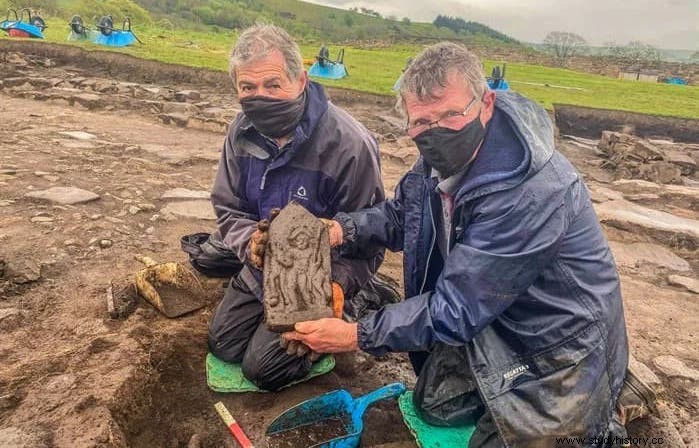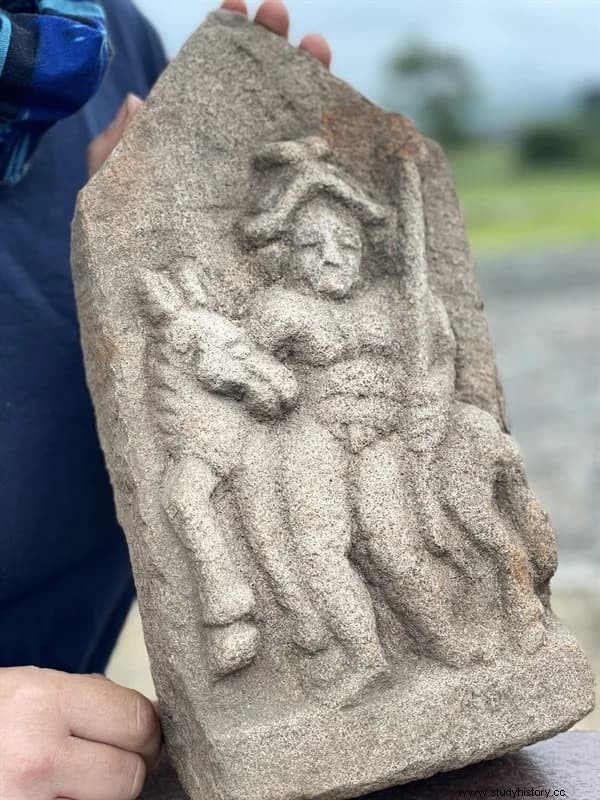During annual excavations at Vindolanda Roman Fort, near Hadrian's Wall in Northumberland, a beautifully carved sandstone relief has been discovered depicting a nude male figure holding a spear in front of a horse/donkey.
The entire stone, measuring 16 by 31.5 centimeters, would have originally been placed in a recess.
The stone was discovered on May 20, a few centimeters deep, by two volunteers from Vindolanda, from Newcastle, who have been helping with the excavations for more than 15 years.

Richie Milor and David Goldwater had been tasked with uncovering a tiled floor inside a 4th-century building in the old fortress. They soon realized that the rough stone lying face up was something special.

The site's archaeologist, Marta Alberti, who is part of the team supervising the excavations at Vindolanda, is now putting together all the clues to try to establish who the carving may represent, and as there are no comparable discoveries at Vindolanda or inscription on the relief, those clues are in the finer details of the carving.
Marta commented:The man's nakedness means that he is probably a god, rather than a simple cavalryman; he also carries a spear on his left arm, a common attribute of the god of war, Mars; however, when looking at his head, the two nearly circular features could be identified as wings:a common attribute of Mercury, god of travel. Horses and donkeys are also often associated with Mercury as the protector of travellers.
Another clue is not in the find itself, but in the place where it was found. The stone floor was very close to that of a large fourth-century cavalry barracks.
It is possible that the units residing in that part of the fort had their own interpretation of Mars, or Mercury, or a third version of the god, as yet unidentified, that fused the qualities of both.
Marta commented that this interesting relief may represent something that we have not only never seen, but may never see again.
The artifact will be on display in the current Vindolanda museum finds exhibition beginning July 1 and through the remainder of the 2021 season.
